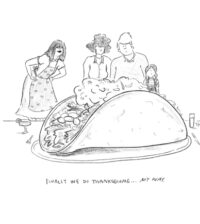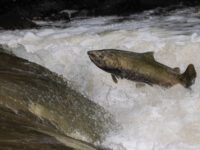News last Friday, August 1, of what some called the earliest harvest in 20 years brought the Thursday-Friday climate change seminar at Gloria Ferrer Winery into immediate–but not panicked– local focus.
“We deal with weather changes all the time,” said Nick Frey, president of the Sonoma Winegrape Commission, when asked whether the harvest related to climate change. “You’ll have cycles along with other trends, such as a warming trend over time, but you’ll still get those cycles – the highs or lows from year to year. Those are pretty hard to predict, and growers just have to be ready to adapt.”
At the seminar last Thursday and Friday, Pancho Campo, president of The Wine Academy of Spain and founder of the World Meeting on Climate Change and Wine, put the cycles into a more ominous long-term context. Drawing partially from information gathered by the Intergovernmental Panel on Climate Change (IPCC), he gave wine business professionals a chance to examine the current data on climate change, its effect on the wine industry and some of the mitigation efforts currently being researched and practiced around the world.
Guest speakers included Dr. Gregory Jones, professor of climatology at Southern Oregon University, who lectured on climate change and the wine industry, and Rob Erlichman, founder of Sunlight Electric, a company dedicated to solar energy conversion, who lectured on the environmental and cost benefits of converting to solar.
Jones, whom wine-writer Thom Elkjer called “one of the foremost researchers in the world on the topic of wine and climate,” gave detailed and statistic-laden presentations. Participant Kaj Ahlmann, owner of Six Sigma Ranch and Vineyard in lower Lake County, said he was impressed by Jones’ presentation because it was grounded in data. “He had some very good local data that showed the four counties… I firmly believe that if you want to do something about this you need data around it so you can quantify what you’re doing and measure what you’re doing when you make progress.”
Elkjer agreed. “[Jones’] ability to predict what will happen with certain appellations based on early season conditions is phenomenal. Most wineries are unaware of it.” Elkjer said his only disappointment in the seminar was that there were so few growers present. “I’m stunned that the wine industry seems to be just blowing this off.” Cyril Penn, editor of Wine Business Monthly, also wondered why there weren’t more growers present.
Frey said he didn’t think a grower’s absence from the seminar meant he was ignoring the issue. “We deal with weather conditions all the time,” he said. “I think growers are aware and are thinking of ways to protect their vineyards from weather spikes and hot temperatures.”
Campo, trained in Seville as one of the presenters of the Climate Project of Al Gore, showed graphic illustrations of the impact of climate change on the vineyards in different regions and pointed out the tendency of the heated areas to move north. To illustrate, he showed two versions of a map of Spain, one representing the present and one showing how it might look 100 years from now, with areas representing heat colored in red. On the future map, the red area had greatly expanded and moved north.
For some places, this was not so bad, he said. “In Denmark, they say they love climate change. Now they can dine al fresco.” He said England is now producing good sparkling wine, and talked about an “excellent Chardonnay” produced in Belgium.
Along with new wine regions, new ethics are growing up, he said. “Old habits and old technology would produce predictable results. Now younger consumers are looking positively at things like ‘fair trade’ labels.” He mentioned a study done in the United Kingdom in which most people claimed not to understand biodynamics, a few thought organic wine had to be low quality, but all understood fair trade–which guarantees decent working conditions for laborers.
Campo described some mitigation efforts being studied or tried, such as shade cloth, canopy management, irrigation – traditionally forbidden in Europe – changing the exposure of the vineyard, changing the grapes, changing the rootstocks, and even changing location. “In Europe, you move north to avoid high temperatures, whereas in southern hemispheres, you move south. In some places, that’s problematical, such as South Africa or Australia. But in Chile, there’s room.”
Some of the changes Campo mentioned included innovations in bottling, transportation and energy production. Erlichman showed detailed examples where solar panels are reducing energy costs and increasing savings. He presented his solar installation in Stags Leap Winery in Rutherford, among others, as an example of a successful, sustainable solution to the energy problem. He also gave detailed breakdowns of the costs of converting to solar, and also showed the costs of not converting – much larger in the long run.
At the end of the seminar, Campo reminded the group that climate change is happening, whether one believes in it or not. “If you can, start doing something now.”
Early harvest coincides with climate change message
More from What's HappeningMore posts in What's Happening »
- Cartoon by Hillary: “Finally We Do Thanksgiving…My Way”
- Permit Sonoma Recommends Decertification of the SDC Specific Plan Environmental Report and Abandoning the SDC Specific Plan
- Chinook Salmon Spotted in Valley Creeks
- Lighted Tractor Parade Set for November 30 on Sonoma Plaza
- Creative Sonoma Announces #TeachTheArts Campaign to Boost Local Teaching Workforce
- The Living Legacy of Mac McQuown






